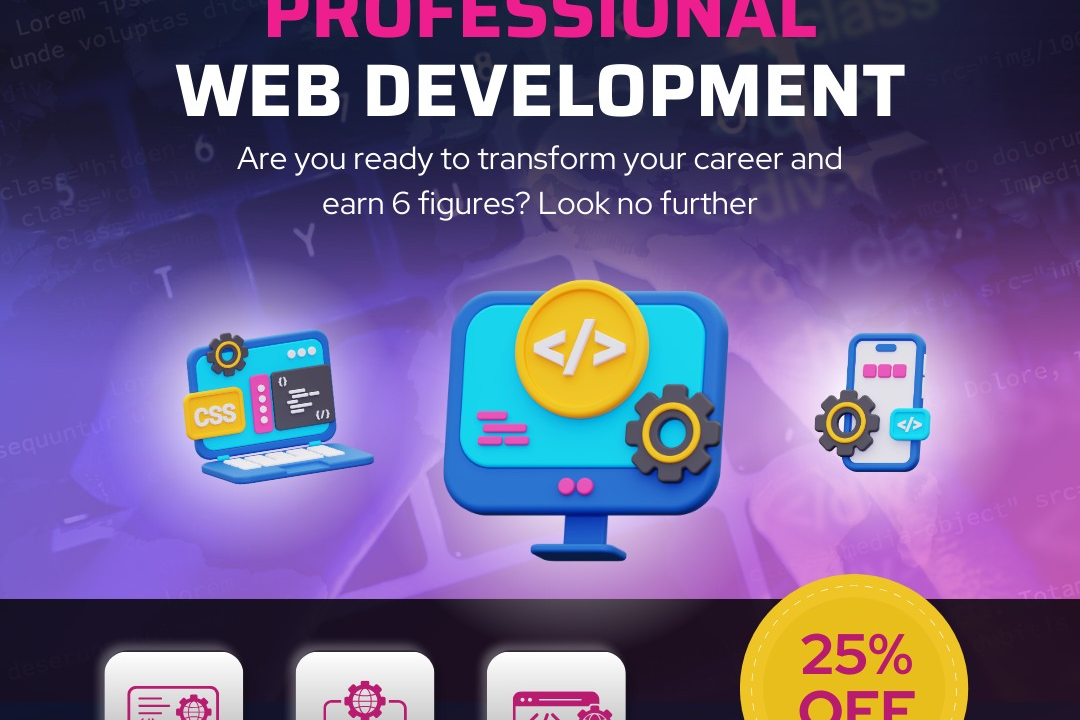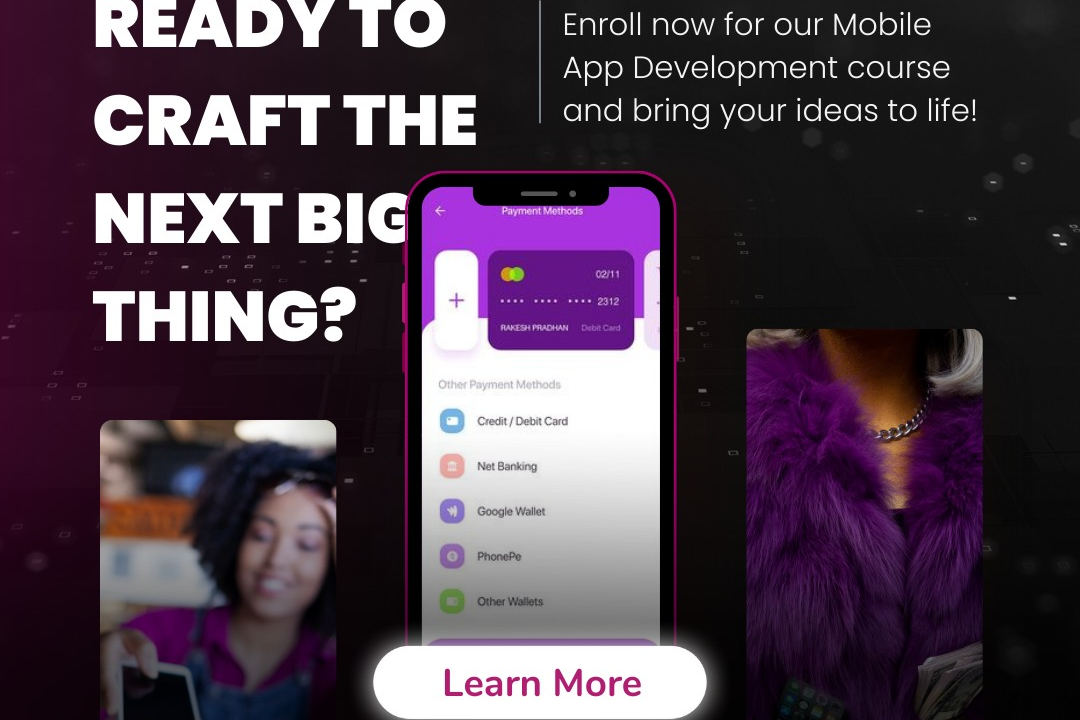Encapsulation Program in PHP
Encapsulation in PHP refers to the object-oriented programming concept of bundling data (properties)
Encapsulation Program in PHP
Encapsulation in PHP is a crucial object-oriented programming principle that helps protect and organize data within classes by controlling access through access modifiers like private, protected, and public. It ensures that sensitive information is hidden from outside manipulation and can only be accessed or modified using designated methods, such as getters and setters. This approach not only enhances data security and integrity but also improves code maintainability and scalability, making it easier to manage complex applications. Implementing encapsulation leads to more robust, modular, and reusable code, which is vital for developing secure and reliable software solutions.
To Download Our Brochure: https://www.justacademy.co/download-brochure-for-free
Message us for more information: +91 9987184296
Encapsulation in PHP is a crucial object oriented programming principle that helps protect and organize data within classes by controlling access through access modifiers like private, protected, and public. It ensures that sensitive information is hidden from outside manipulation and can only be accessed or modified using designated methods, such as getters and setters. This approach not only enhances data security and integrity but also improves code maintainability and scalability, making it easier to manage complex applications. Implementing encapsulation leads to more robust, modular, and reusable code, which is vital for developing secure and reliable software solutions.
Course Overview
Our “Encapsulation Program in PHP” course offers a concise, hands-on introduction to the fundamental concept of encapsulation in PHP. You'll learn how to secure and organize data within classes using access modifiers, implement getter and setter methods, and write clean, maintainable code. This course is ideal for beginners and developers seeking to strengthen their object-oriented programming skills with practical, real-time project experience.
Course Description
The “Encapsulation Program in PHP” course provides a practical introduction to encapsulation, teaching how to secure and manage data within PHP classes using access modifiers and getter-setter methods, enabling developers to write organized and maintainable object-oriented code through real-time projects.
Key Features
1 - Comprehensive Tool Coverage: Provides hands-on training with a range of industry-standard testing tools, including Selenium, JIRA, LoadRunner, and TestRail.
2) Practical Exercises: Features real-world exercises and case studies to apply tools in various testing scenarios.
3) Interactive Learning: Includes interactive sessions with industry experts for personalized feedback and guidance.
4) Detailed Tutorials: Offers extensive tutorials and documentation on tool functionalities and best practices.
5) Advanced Techniques: Covers both fundamental and advanced techniques for using testing tools effectively.
6) Data Visualization: Integrates tools for visualizing test metrics and results, enhancing data interpretation and decision-making.
7) Tool Integration: Teaches how to integrate testing tools into the software development lifecycle for streamlined workflows.
8) Project-Based Learning: Focuses on project-based learning to build practical skills and create a portfolio of completed tasks.
9) Career Support: Provides resources and support for applying learned skills to real-world job scenarios, including resume building and interview preparation.
10) Up-to-Date Content: Ensures that course materials reflect the latest industry standards and tool updates.
Benefits of taking our course
Functional Tools
1 - Integrated Development Environments (IDEs): IDEs like PHPStorm, Visual Studio Code, and NetBeans are powerful tools that provide a user friendly interface for writing, testing, and debugging PHP code. They offer features such as syntax highlighting, code completion, and error detection, which significantly enhance the learning experience. Using these IDEs allows students to efficiently develop encapsulation concepts by providing real time feedback and reducing development time.
2) PHP Development Server: Built in PHP server or local development environments like XAMPP, WAMP, and MAMP enable students to set up local web servers on their machines easily. These tools facilitate testing PHP scripts and applications without needing a live server, making it convenient for students to experiment with encapsulation and object oriented programming in a safe, controlled environment.
3) Version Control Systems (VCS): Tools like Git and GitHub are essential for managing code changes collaboratively. They help students learn best practices in code management, track modifications, and revert to previous versions if needed. Incorporating VCS in the training program ensures students understand the importance of clean, organized code during encapsulation projects.
4) PHP Frameworks: Familiarity with frameworks such as Laravel, Symfony, or CodeIgniter is part of advanced encapsulation training. These frameworks offer predefined structures and components that utilize encapsulation principles, helping students understand how to implement object oriented concepts in real world applications efficiently.
5) Code Debuggers and Profilers: Tools like Xdebug provide advanced debugging and profiling features that assist students in identifying bugs, understanding execution flow, and optimizing their code. Debuggers help visualize how encapsulation impacts the program's behavior, leading to a deeper understanding of the concept.
6) Documentation Tools: Platforms like PhpDocumentor enable students to generate professional documentation directly from their code comments. Emphasizing documentation promotes good coding practices, making their encapsulated classes and functions easier to understand and maintain for future projects.
7) Database Management Systems (DBMS): Tools such as MySQL, PostgreSQL, and phpMyAdmin are integral for projects involving data encapsulation. These tools help students learn how to encapsulate database queries and operations within classes, adhering to best practices for secure and scalable data management.
8) Live Collaboration Platforms: Tools like Slack, Microsoft Teams, or Zoom facilitate real time interaction between instructors and students, allowing for immediate clarifications, feedback, and collaborative code reviews. This interactive environment enhances understanding of encapsulation concepts through discussion and shared coding sessions.
9) Learning Management Systems (LMS): Platforms such as Moodle or Blackboard organize course content, assignments, and quizzes, ensuring structured learning. They often include forums and resource repositories that support students in mastering encapsulation through structured modules and peer interaction.
10) Code Analysis Tools: Static code analyzers like PHP_CodeSniffer and SonarQube help ensure adherence to coding standards, detect potential code smells, and promote best practices. These tools are invaluable in training students to write clean, maintainable encapsulated code that aligns with industry standards.
11 - Containerization and Virtualization Tools: Technologies like Docker allow students to create consistent development environments, ensuring that their encapsulation projects run smoothly across different systems. Using containers helps illustrate how encapsulation and modular code can be deployed reliably in diverse production environments.
12) Automated Testing Frameworks: PHPUnit and Codeception enable students to implement unit tests for their encapsulated classes and modules. Emphasizing test driven development fosters a disciplined approach to encapsulation, ensuring code reliability, robustness, and ease of maintenance.
13) API Development and Testing Tools: Postman and Swagger are essential for designing, testing, and documenting RESTful APIs. Incorporating these tools helps students understand how encapsulation extends to API design, promoting secure and scalable integrations in enterprise level applications.
14) Code Snippet Managers: Tools like GitHub Gist or SnippetsLab help students save, organize, and reuse code snippets related to encapsulation concepts. Efficient management of reusable code accelerates project development and reinforces best practices in code reuse.
15) Cloud Based Development Platforms: Services like AWS Cloud9 or Google Cloud Shell provide online IDEs and deployment options for students to work collaboratively on encapsulation projects in a cloud environment. This exposure helps them understand scalable and distributed application development.
16) Static and Dynamic Code Analyzers: Tools such as SonarQube provide continuous code quality checks, helping students identify potential issues early in the development process of their encapsulation projects. This promotes a culture of writing clean, maintainable code that aligns with industry standards.
17) Interactive Learning Platforms: Platforms like Codecademy or Pluralsight offer specialized courses and interactive exercises on PHP and object oriented programming. These resources supplement hands on training with guided learning, reinforcing encapsulation principles effectively.
18) Workflow Automation Tools: Tools like Jenkins or GitHub Actions enable continuous integration and deployment (CI/CD) pipelines for PHP projects. Students learn how to automate testing, building, and deploying encapsulation based applications, fostering modern DevOps practices.
19) Data Modeling and Diagramming Tools: Software like draw.io or Lucidchart aids in visualizing class diagrams, object relationships, and encapsulation structures, helping students grasp complex design patterns and relationships within their code architecture.
20) Security Testing Tools: Plugins like OWASP ZAP or PHP Security Audit tools focus on identifying vulnerabilities in PHP applications. Training students to incorporate security analysis ensures their encapsulated code adheres to best practices, especially relevant for enterprise level solutions.
21 - Learning Path Customization Platforms: Adaptive learning tools that tailor course material based on individual progress and understanding help optimize how students learn encapsulation concepts, ensuring a personalized and effective training experience.
22) Code Quality Metrics Tools: Incorporating tools that measure code complexity, maintainability, and other quality metrics—such as PHPMD—helps students evaluate and improve their encapsulated code, fostering professional development.
23) Cross Platform Compatibility Testing Tools: Utilizing BrowserStack or Sauce Labs enables students to test their encapsulated PHP applications across various browsers and devices, ensuring consistent performance and user experience.
Browse our course links : https://www.justacademy.co/all-courses
To Join our FREE DEMO Session:
This information is sourced from JustAcademy
Contact Info:
Roshan Chaturvedi
Message us on Whatsapp: +91 9987184296
Email id: info@justacademy.co











